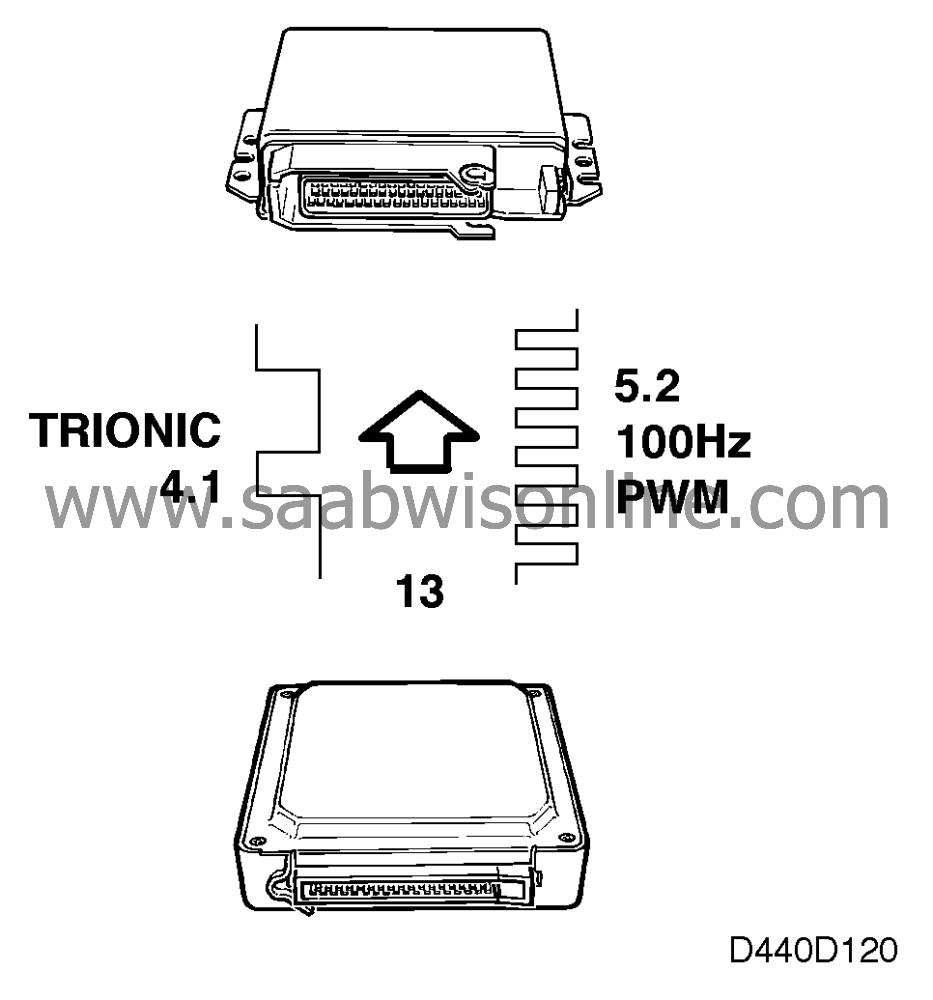Engine torque limitation
| Engine torque limitation |

During certain shifting occurrences, the engine torque is reduces so that the shifting is performed as smoothly as possible and the wear on the transmission is reduced.
To check this, the transmission control module sends a signal from pin 13 to Motronic engine control module pin 85 (4.1) or 21 (5.2), or to Saab Trionic engine control module pin 13. The transmission control module knows when to shift gear and informs the engine control module to this effect. Torque limitation is then performed by the engine control module. It does this by retarding the ignition timing, which has the effect of reducing engine torque.
The signal between the control modules is different for 4-cyl. and 6-cyl. engines.
4-cyl engines
In normal position the voltage on the signal lead is B+. When the transmission control module requests torque limitation, it pulls down pin 13 to 0 V (ground) for a period of time proportional to the requested reduction. The maximum length of time is 250 ms.6-cyl. engines
Normally, the signal lead carries battery positive voltage (B+). When the transmission control module requests torque limitation, it reduces the current on pin 13 to 0 V (ground) by means of a 100 Hz PWM signal. The pulse ratio is proportional to the requested torque reduction.The transmission control module can generate 8 predetermined pulse ratios between 9%% and 92%%, which should give rise to ignition timing angles between -5° and +30°. The pulse duration of the above corresponds to between 0.9 ms and 9.2 ms.



